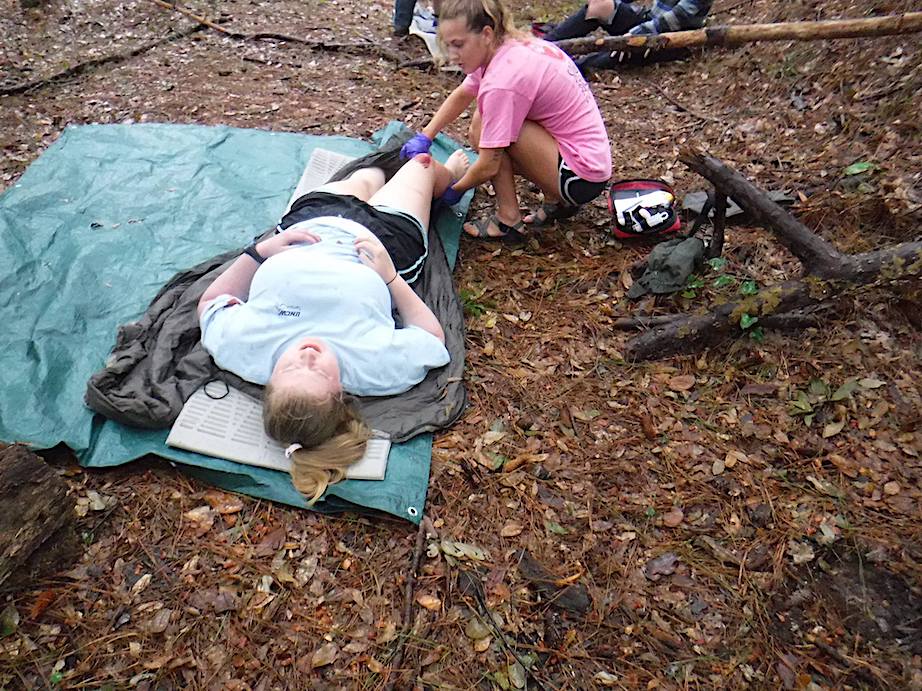Concussion Recognition and Treatment in the Backcountry
Wilderness Medicine TrainingConcussion recognition and treatment has gotten a lot of attention over the last decade, mostly in the context of youth and professional sports such as tackle football and soccer. It’s even a topic for those who serve in our armed forces. However, confusion over its prevention, diagnosis, and treatment remains widespread.
In an interview with a reporter from the Chicago Sun Times, former National Football League quarterback Brett Favre, who was knocked out cold only once in his 20-year career, claimed that “probably 90 percent” of the tackles he endured left him with a concussion.
He’s most likely correct in that estimation. After all, the definition of “concussion” is broad: “A concussion is a brain injury, a disturbance in brain function induced by traumatic forces, either from a direct blow to the head or a transmitted force from a blow to the body.” It disrupts brain function at the cellular metabolic level but does not result in major structural damage. Conventional MRI or CT scanning will not show evidence of a concussion.
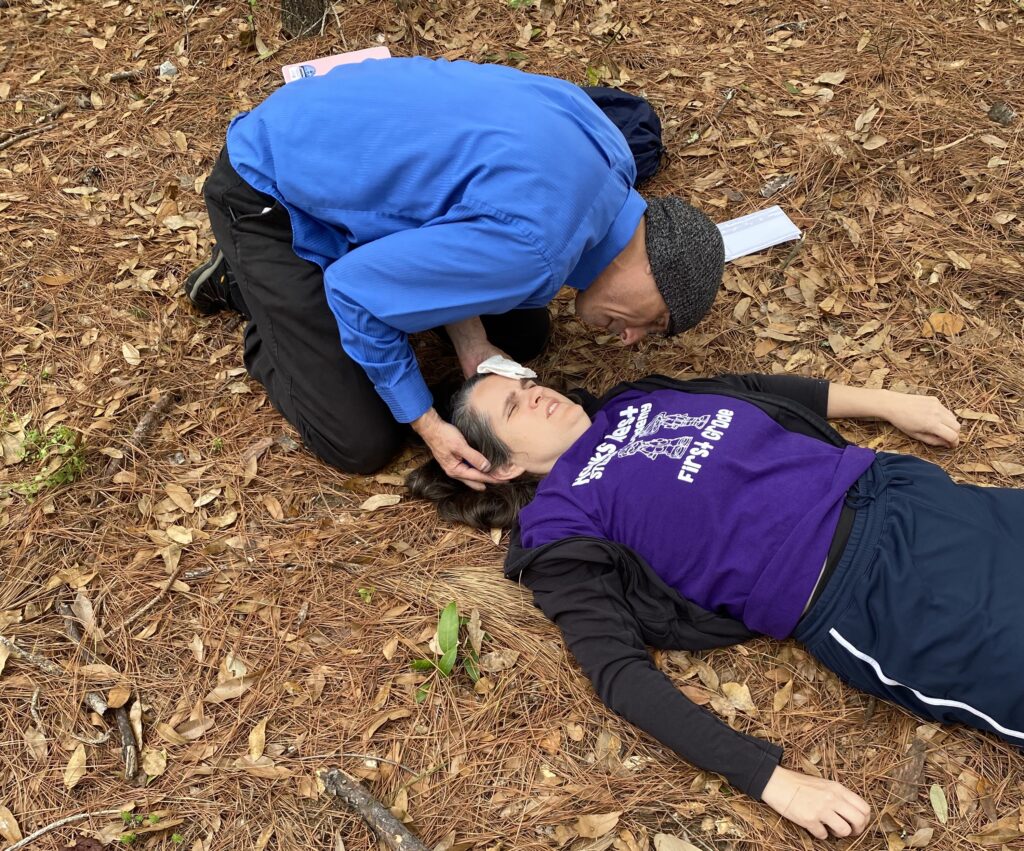
So, how do you know if you or someone else has suffered a concussion while in the backcountry? And, after having made that determination, what should be done? Having clear answers to these two questions is essential for successful recovery and to prevent long-term cognitive and psychological complications. This is true no matter where the concussion takes place, but especially in the backcountry where medical treatment from a full-time team is unavailable. (more…)
Avoiding Target Fixations and Incident Pits in the Backcountry
Risk Management“Look where you want to go!”
I have conveyed this message to wilderness course participants countless times, shouting, screaming, and using hand signals when necessary. Sometimes I’m yelling above the roar of a set of rapids or the sound of an adjacent waterfall.
“Look where you want to go!”
I emphatically issue the same advice while watching climbers rappelling down a cliff, or verbally guiding a student on a mountain bike through a sketchy section of trail. In each case, the point of my shouting is to get the students to stop looking at the obstacle.
“Look where you want to go” really translates as “Stop looking at the obstacle! Don’t fixate on the hazard!”
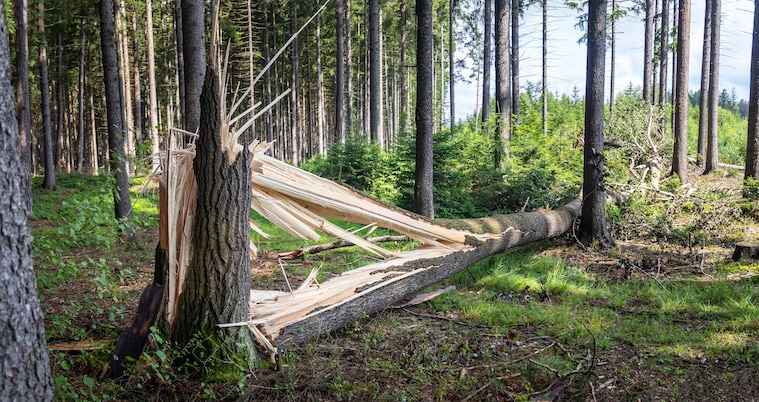
And it doesn’t matter if you’re a Wilderness First Responder approaching the scene of a backcountry incident, or a student on a wilderness course attempting to navigate a perceived hazard or obstacle, looking too closely at a hazard you want to avoid can be very dangerous.
At first glance — no pun intended — you might think it wise to actually look closely at the hazard you want to avoid. No argument there. You absolutely need to identify obstacles, especially in the backcountry and other places considered Wilderness. In fact, identifying an obstacle is a key factor in remaining safe.
But here’s the thing: (more…)
The Role of the Wilderness First Responder During Water Rescues
Wilderness Medicine TrainingIt may surprise you to learn that drownings — along with heart attacks and falls — are among the leading causes of death for those who venture into the wilderness for recreation or education in the United States.
Statistics show that there are nearly 4,000 fatal drownings each year in the United States, with a little more than 8,000 nonfatal drownings. These figures include boating-related drownings. In fact, the threat of drowning is so prevalent that the first edition of the NCOAE Wilderness Medicine Field Guide devotes an entire section to Environmental Submersion and Drowning Injury.
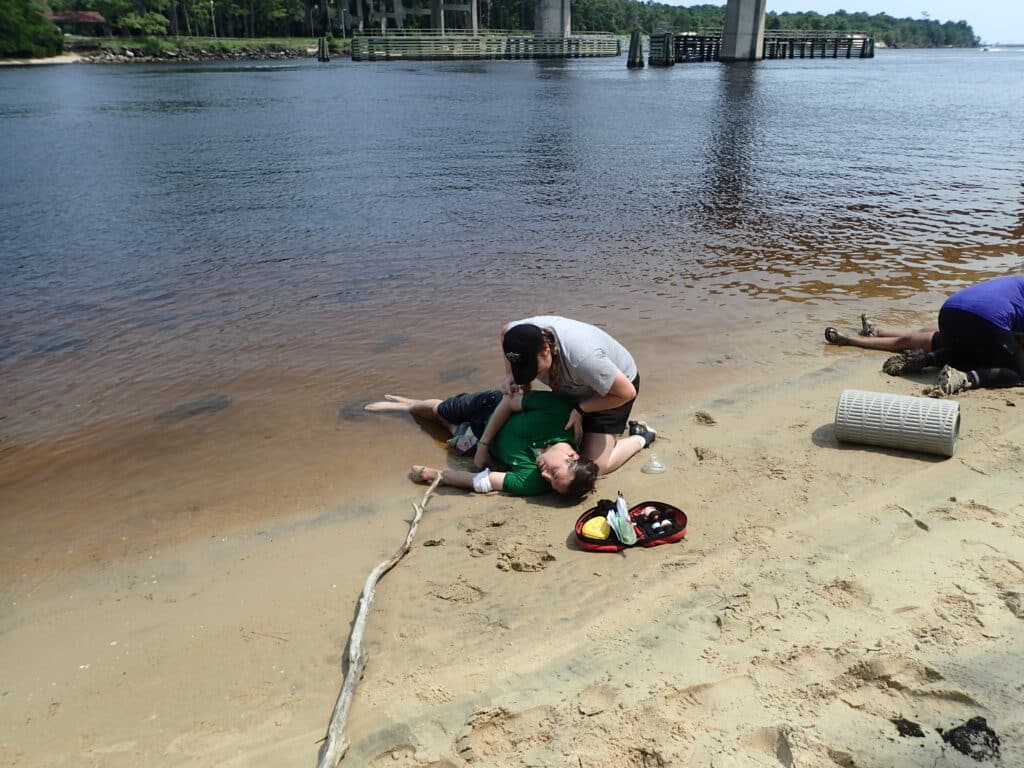
Of course, it’s during the spring and summer that most outdoor explorers are on the water, including those participating in backcountry expeditions. Lakes, rivers and streams provide much-needed relief in the backcountry on a hot August afternoon and are sought-after destinations for many outdoor enthusiasts.
For those training to become Wilderness First Responders (WFR) and those participating in Wilderness First Aid (WFA) training, a major consideration is assisting with medical emergencies that occur on or near the water. (more…)
Why Become a Wilderness First Responder?
Wilderness First Responder TrainingFor those outdoor education organizations — or for those enthusiasts who live for a well-planned wilderness experience — the inclusion of a Wilderness First Responder (WFR) on the trail brings an additional layer of risk mitigation to any backcountry experience.
As for the question posed in the headline above, one of the primary reasons for becoming a Wilderness First Responder by earning your WFR certification, is the demand for highly trained and prepared educators and guides.
When you’re prepared to deal with medical emergencies in remote wilderness areas (locations where emergency response personnel may be difficult to reach or significantly delayed in arriving), you can not only breathe a sigh of relief; you can rest assured that you have someone in the group with the critical thinking skills and medical knowledge to help assess the situation and then properly manage the team if things go wrong.
What Does WFR Certification Entail?
Here’s what you should learn during a Wilderness First Responder course:
- Basic first aid skills, including bleeding control and wound care, splinting, and CPR.
- How to assess a patient and pinpoint any issues that compromise optimal health.
- The basic anatomy and pathophysiology of common medical problems. and injuries including shock, internal bleeding, dehydration, and infection.
- How to differentiate between true emergencies and more routine medical complaints.
- What to expect and how to proceed when you have to stay with your patient for hours or days before help arrives or an evacuation can occur.
- Evacuation guidelines and techniques.
Who Normally Takes a WFR Course?
Many professional outdoor industry businesses — including (more…)
A More Convenient Way To Receive Wilderness First Responder Training
Wilderness First Responder Training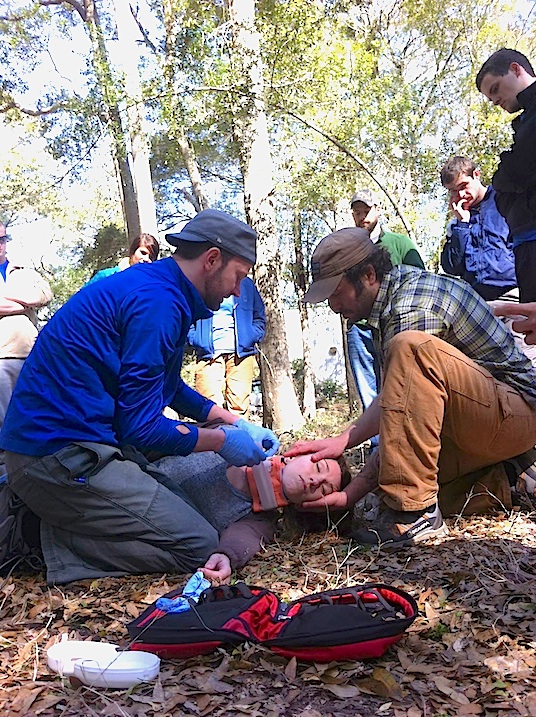 It’s a well-known fact that one outdoor education industry standard for trip leaders, wilderness guides and backcountry educators who work on multi-day expeditions, is that you have to have a current and up-to-date Wilderness First Responder (WFR) training. How you satisfy that requirement is up to you.
It’s a well-known fact that one outdoor education industry standard for trip leaders, wilderness guides and backcountry educators who work on multi-day expeditions, is that you have to have a current and up-to-date Wilderness First Responder (WFR) training. How you satisfy that requirement is up to you.
Traditionally, the only way to earn the WFR credential was to enroll in an 80-hour course that took place over a one-and-a-half to two-week timeframe. That meant taking a leave from work, packing up your stuff, saying goodbye to your family, and driving to some random outdoor facility where you’d either camp or bunk with strangers for up to 14 days while you participated in the training. And while that format is still very popular and effective, a new approach for completing ‘woofer’ training has emerged, allowing those of us who aren’t able to commit up to two weeks away (from work and family) to receive the same training and certification.
It’s called a Wilderness First Responder & Wilderness EMT Hybrid/DLP Training (the DLP part stands for distance learning project), and it combines an approved at-home study and online testing component, followed by a four-night / five-day hands-on training here at The National Center for Outdoor & Adventure Education (NCOAE) in Wilmington, North Carolina.
This NCOAE-sponsored course exceeds the Wilderness First Responder & WEMT Scope of Practice requirements endorsed by the Wilderness Medical Society and is eligible for Fellow of the Academy of Wilderness Medicine credits from WMS!
With this approach to receiving your Wilderness First Responder certification, you complete 30-50 hours of home study, successfully past four tests administered online (which means you need a computer and reliable broadband/high speed Internet access), and then make your way to Wilmington for the short hands-on component. (more…)
TALK TO US
Have any further questions about our courses, what you’ll learn, or what else to expect? Contact us, we’re here to help!
